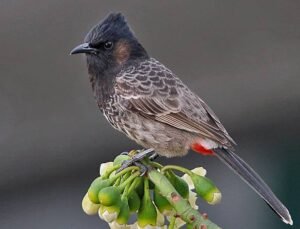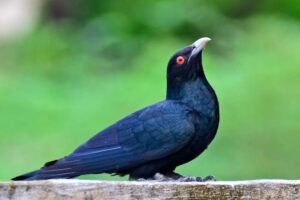Slender Coral Snake: Complete Guide and Fascinating Facts
Introduction to the Slender Coral Snake
The Slender Coral Snake (Calliophis melanurus), known for its vibrant and distinct coloration, is one of nature’s remarkable yet elusive species. Found primarily in tropical forests and wooded areas, these snakes are both beautiful and dangerous. Their slender build, combined with vivid red, blue, or yellow bands, makes them striking in appearance. Despite their small size, they are known for having potent venom that is harmful to their prey and potentially dangerous to humans.
Slender Coral Snakes are essential for ecosystem stability, as they help regulate populations of small vertebrates, thereby contributing to ecological balance. Although often misunderstood and feared, these snakes contribute to the biodiversity of their habitats. Understanding the unique characteristics and importance of the Slender Coral Snake can lead to better conservation and appreciation of these creatures.

Species Profile: Slender Coral Snake
| Attribute | Details |
|---|---|
| Snake Name | Slender Coral Snake |
| Scientific Name | Calliophis melanurus |
| Wildlife Protection Act (WLPA) Schedule | Schedule IV |
| Regional Names (All Languages) | Various regional names depending on the country and local language |
| Physical Description | Small, slender body; vibrant red, blue, or yellow bands; smooth scales; average length of 50 cm |
| Habitat | Dense forests, tropical rainforests, wooded regions |
| Diet | Primarily small vertebrates like frogs, sometimes small rodents |
| Behavior | Mostly solitary, active during the night, retreats into burrows or under leaves |
| Venomous or Non-Venomous | Venomous |
| Venom Type | Neurotoxic |
| Venom Effects on Prey | Paralysis leading to immobilization |
| Venom Effects on Humans | Pain, difficulty breathing, neurological complications |
| Common or Rare Species | Rare |
| Life Span | Approximately 7–10 years |
| Mating & Reproduction | Oviparous; lays 2–5 eggs per clutch |
Introduction to Snakes of the Slender Coral Snake
Snakes like the Slender Coral Snake exhibit a variety of remarkable adaptations and behaviors that allow them to thrive in diverse habitats. These reptiles are known for their unique anatomy, with flexible, elongated bodies and specialized scales that aid in movement and camouflage. As carnivorous predators, they have an essential role in controlling populations of smaller animals like rodents, insects, and other reptiles.
The Importance of Snakes in Ecosystems
Snakes are vital components of many ecosystems. By preying on smaller animals, they help regulate species populations, which maintains the balance necessary for ecological health. This predatory role contributes to preventing the overpopulation of specific prey species, reducing crop damage, and controlling the spread of disease.
Common Myths and Misconceptions About Snakes
Snakes are frequently misunderstood and feared, largely because of myths and common misconceptions. Many people believe that all snakes are dangerous and aggressive, when in fact, most snakes are non-venomous and only strike in self-defense. Education about their behaviors and ecological importance can help alleviate unnecessary fear and promote conservation.
Habitat and Distribution
Slender Coral Snakes, like many snake species, are found in various habitats that suit their hunting and sheltering needs. From tropical rainforests to dense woodlands, these snakes prefer locations that provide ample cover from predators and a rich source of prey.
The distribution of these snakes is primarily in Southeast Asia and parts of South Asia where warm, humid climates are prevalent. Within these regions, they can often be found hiding beneath logs, rocks, and leaf litter, emerging at night to hunt.
| Habitat Type | Characteristics |
|---|---|
| Forests | Dense tree cover, abundant leaf litter for hiding, high prey availability |
| Rainforests | Humid environment with ample food sources and camouflage |
| Wooded Areas | Moderate tree cover, sheltering spots under logs and rocks |
| Wetlands | Near water sources, where amphibians (common prey) are plentiful |
| Grasslands | Less common habitat but utilized when conditions are favorable |
Snake Behavior
Hunting and Feeding Habits
The Slender Coral Snake is primarily a nocturnal hunter that uses its keen senses to detect prey at night. Its diet consists of small vertebrates, especially lizards, frogs, and occasionally small mammals. Using its neurotoxic venom, it immobilizes its prey quickly, allowing for safe consumption.
Mating and Reproduction
Slender Coral Snakes are oviparous, laying eggs rather than giving birth to live young. The mating season occurs once per year, with females laying small clutches of 2–5 eggs. These eggs are usually hidden under leaves or in burrows, offering protection until they hatch after several weeks.
Defense Mechanisms
To defend themselves, Slender Coral Snakes rely on their venom as a primary weapon. When threatened, they may also employ camouflage, blending into their environment. Their bright colors act as a signal to potential predators, indicating their venomous nature.
First Aid and Medical Treatment for Slender Coral Snake Bites
Although bites from a Slender Coral Snake are uncommon, they can be harmful. Seeking prompt medical care is essential if bitten by this snake. Follow these steps for first aid and ensure medical intervention as soon as possible:
- Remain calm and immobilize the limb to slow venom spread.
- Do not attempt to cut or suck the wound; this can worsen the injury.
- Apply a pressure immobilization bandage to restrict lymphatic movement.
- Seek immediate medical attention to receive antivenom or appropriate care.
Global Impact of Slender Coral Snake Bites
While Slender Coral Snake bites are rare, they can be life-threatening, especially in regions with limited access to healthcare. In areas where the species is found, awareness about snakebite management and prevention can save lives and reduce the burden on local healthcare.
If You Encounter a Slender Coral Snake on Your Property
- Remain Calm and Assess the Situation: Slender Coral Snakes are shy and will generally avoid humans.
- Ensure Safety: Keep a safe distance and make sure children or pets are away.
- Identify the Snake (If Possible): Look for distinguishing characteristics like color bands without getting too close.
- Contact Professional Help: Call animal control or a wildlife expert to safely remove the snake if needed.
- Prevent Future Encounters: Keep your property clean, removing debris and hiding spots.
- Educate Yourself and Others: Understanding snake behavior can help reduce fear and unnecessary harm.
Tips for Snake Enthusiasts
- How to Safely Observe Snakes in the Wild: Always keep a respectful distance. Avoid sudden movements and observe quietly.
- Tips for Aspiring Herpetologists: Study local snake species, their habitats, and behaviors. Seek guidance from professionals or join conservation groups.
Interesting Facts About the Slender Coral Snake
- Unique Coloration Patterns: Unlike many other coral snakes, Slender Coral Snakes have a distinctive combination of red, blue, and black rings that help them stand out in their natural habitat.
- Master of Camouflage: Although brightly colored, these snakes are adept at hiding under foliage and can blend into their surroundings, making them difficult to spot.
- Efficient Predator: Slender Coral Snakes use their neurotoxic venom to paralyze prey quickly, allowing them to feed efficiently without struggle.
- Rarely Seen by Humans: Due to their shy and reclusive nature, encounters with these snakes are rare, making them mysterious to herpetologists and enthusiasts alike.
- Critical Role in Ecosystems: By controlling populations of small vertebrates, Slender Coral Snakes help maintain a balanced ecosystem, reducing potential crop pests and aiding in disease control indirectly.

Frequently Asked Questions (FAQs) about the Slender Coral Snake
1. What is a Slender Coral Snake?
The Slender Coral Snake (Calliophis melanurus) is a venomous species of snake found in parts of Southeast Asia and South Asia. Known for its distinctive red, blue, and black coloration, it is a small yet powerful predator that primarily hunts small vertebrates like lizards and frogs.
2. Are Slender Coral Snakes venomous?
Yes, the Slender Coral Snake is venomous. It has neurotoxic venom that can immobilize its prey quickly. While their venom is potent for hunting, bites to humans are rare and can be dangerous without prompt medical treatment.
3. What do Slender Coral Snakes eat?
Slender Coral Snakes are carnivores and typically prey on small vertebrates like lizards, frogs, and sometimes even small rodents. They use their venom to paralyze and subdue their prey before swallowing it whole.
4. Where do Slender Coral Snakes live?
Slender Coral Snakes prefer tropical forests, rainforests, and wooded areas with dense vegetation. These environments provide ample hiding spots, food sources, and a safe place to retreat from predators.
5. How dangerous is a Slender Coral Snake bite?
While bites from a Slender Coral Snake are uncommon, their venom is highly toxic. If bitten, it can lead to symptoms like pain, difficulty breathing, and neurological effects. Immediate medical attention is required to administer antivenom and treat the effects of the venom.
6. What are the physical characteristics of the Slender Coral Snake?
The Slender Coral Snake is known for its bright, colorful bands—typically red, blue, and black—that cover its slender body. These snakes are small in size, usually growing up to 50 cm in length. Their smooth scales and bright markings make them stand out in their natural habitat.
7. Are Slender Coral Snakes common or rare?
Slender Coral Snakes are considered rare and are not commonly seen by people due to their reclusive nature. Their vibrant coloration and secretive behavior make them more difficult to spot in the wild.
8. How long do Slender Coral Snakes live?
The average lifespan of a Slender Coral Snake is between 7 to 10 years. This lifespan can vary depending on factors like habitat, prey availability, and potential threats from predators.
9. How do Slender Coral Snakes reproduce?
Slender Coral Snakes are oviparous, meaning they lay eggs rather than giving birth to live offspring. A female usually deposits 2 to 5 eggs in each clutch, which incubate in a secure location until they hatch.
10. What should I do if I encounter a Slender Coral Snake?
If you encounter a Slender Coral Snake in the wild or on your property, remain calm and keep a safe distance. These snakes are generally shy and will not attack unless provoked. Contact a wildlife expert or animal control for safe removal if needed.
11. How can I tell if a snake is a Slender Coral Snake?
Slender Coral Snakes have distinctive coloration patterns with bright red, blue, and black rings. Their slender body and small size make them easy to identify once you are familiar with their physical characteristics. However, it’s important to avoid getting too close, as they are venomous.
12. How can I prevent encounters with Slender Coral Snakes?
To reduce the likelihood of encountering a Slender Coral Snake on your property, make sure to keep the area clean and free of debris like fallen leaves and rocks, which provide hiding spots. Seal any holes or cracks around your home and be cautious when moving garden tools or materials that may harbor snakes.
13. How do I treat a bite from a Slender Coral Snake?
If bitten by a Slender Coral Snake, get medical help immediately. While waiting for assistance, stay calm, immobilize the affected limb, and apply a pressure bandage. Avoid attempting to suck out the venom or make cuts on the wound, as these actions can make the situation worse.
14. Can Slender Coral Snakes be kept as pets?
Due to their venomous nature, Slender Coral Snakes are not suitable as pets. They require specialized care and handling, and it is unsafe for non-experts to keep them. It’s better to appreciate these fascinating creatures in their natural habitat.
15. What role do Slender Coral Snakes play in their ecosystem?
Slender Coral Snakes help maintain the balance of their ecosystem by controlling populations of small vertebrates. This helps prevent overpopulation and ensures the health of the local environment. Their presence is important in maintaining biodiversity within their habitats.
16. Are there any misconceptions about Slender Coral Snakes?
A common misconception about the Slender Coral Snake is that it is highly aggressive. In reality, these snakes are shy and avoid human interaction when possible. They only strike in self-defense when threatened, and bites are rare.
Related Posts
| Post Title | Link |
|---|---|
| What Are Reptiles? | What Are Reptiles? |
| Cobra Snake – All Information | Cobra Snake – All Information |
| King Cobra – All Information | King Cobra – All Information |
| Russell’s Viper | Russell’s Viper |
| Common Krait – All Information | Common Krait – All Information |
| Banded Krait Snake – All Information | Banded Krait Snake – All Information |
| Saw-Scaled Viper Snake – All Information | Saw-Scaled Viper Snake – All Information |
| The Big Four Snakes of India | The Big Four Snakes of India |
| Common Cat Snake – All Information | Common Cat Snake – All Information |
| The Green Vine Snake – An In-Depth Look | The Green Vine Snake – An In-Depth Look |


